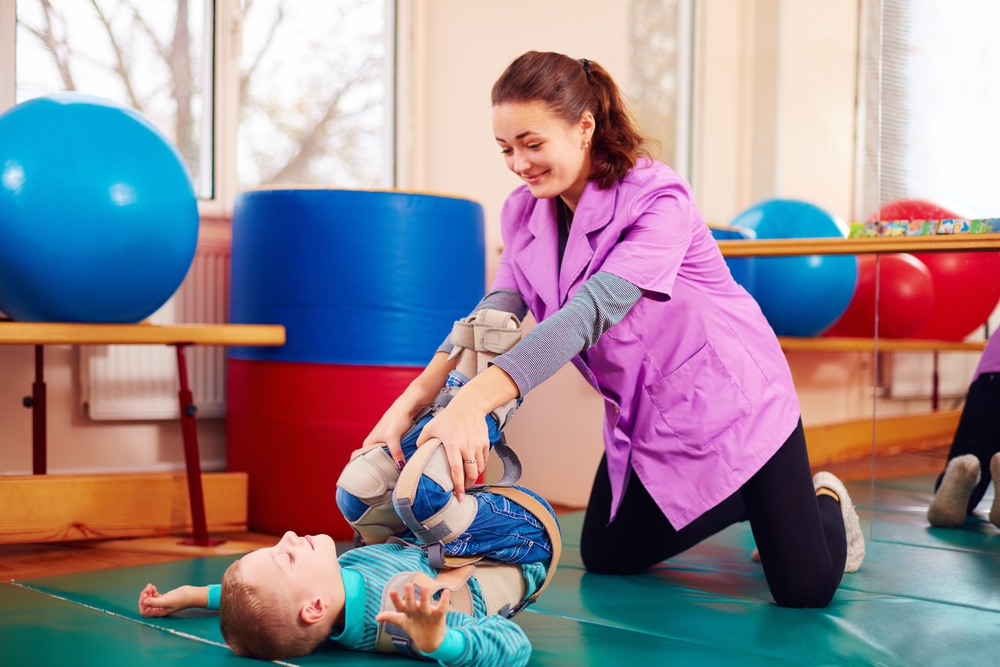EDS in Children

Parenting a child with Ehlers-Danlos syndrome (EDS) can be challenging. This information about pediatric EDS may be useful in helping you meet those challenges as you endeavor to provide the best possible care for your child.
What is EDS?
EDS refers to a group of disorders that affect the connective tissue, making it weak and easy to damage. Connective tissue gives structure and support to joints, skin, blood vessels, and organs. Problems with connective tissue cause mobility issues and present the risk of injury.
Signs and symptoms of EDS in children
Children may not become noticeably symptomatic until their teen years. Symptoms also can be triggered by a virus or other trauma. Many young patients’ symptoms are so mild that they go unnoticed, while others may be severely affected.
Pediatric EDS symptoms can appear at birth or soon afterward and can include abnormal scarring, autonomic nervous system issues, cardiovascular problems, early-onset osteoarthritis, elastic or stretchy skin that bruises easily, extra folds of skin, gastrointestinal issues, internal bleeding, joint hypermobility, organ rupture, osteoporosis, bleeding, and sometimes velvety skin.
Children may experience neck pain and “clicking” or unstable joints that might lead to dislocations. They also may have bladder issues, tire easily, have poor concentration, and show a propensity to fidget. Their injuries may take longer to heal compared to other children.
Babies and children with hypermobile EDS often have weak muscles, which can cause delays in the development of their motor skills such as sitting and walking.
Helping your child cope
It may be a challenge to meet the needs of your child without making them feel as if they’re “different.” It is important that your child live as normal as possible.
Physical and mechanical therapies
Physical therapy may help some children. It includes strengthening, stretching, and coordination and balance exercises. Your child’s physiotherapists may prescribe splints or orthoses to treat lower limb pain in children with hypermobility. However, according to a 2018 study, more research is necessary to measure the benefits of physical and mechanical therapies for children with hypermobile EDS.
Dental problems
Some children with EDS — like adult patients — may have oral problems including pain, difficult tooth extractions, and gum disease. Tips for oral care for children include avoiding sugary foods and drinks and making sure they brush their teeth and visit the dentist regularly.
School
Children with EDS are likely to need accommodations to assist in reducing the syndrome’s effect on their education and schooling.
You should work with your child’s school administration to establish an individualized education plan (IEP) for your child. The IEP sets forth what resources and services your child will need and which accommodations the school will provide.
You should make school staff aware that a medical emergency, such as a dislocated joint, may occur. Ensure they know what action to take in such a situation.
Coping with negative emotions
Because EDS is inherited, you may have feelings of guilt for having passed the disease to your child. You may wonder if your child will grow to have negative feelings toward you about the disorder. It’s important to remember that you did nothing wrong. Maintaining a good support network can help you in difficult times.
Last updated: Dec. 16, 2020
***
Ehlers-Danlos News is strictly a news and information website about the disease. It does not provide medical advice, diagnosis, or treatment. This content is not intended to be a substitute for professional medical advice, diagnosis, or treatment. Always seek the advice of your physician or other qualified healthcare providers with any questions you may have regarding a medical condition. Never disregard professional medical advice or delay in seeking it because of something you have read on this website.





